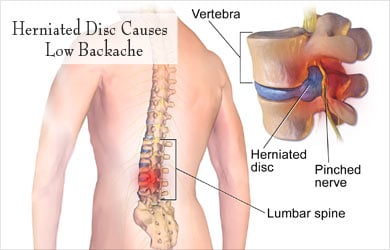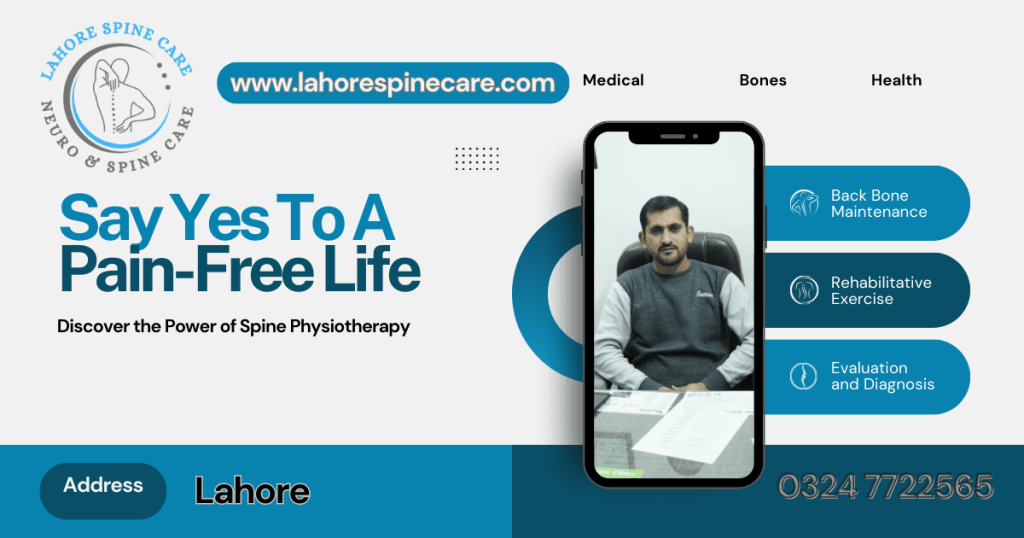LAHORE SPINE CARE
Table of Contents
ToggleIntroduction
Low back pain is a common ailment that affects millions of people worldwide. It can range from a dull, constant ache to a sudden, sharp pain that makes movement difficult. Understanding the causes, prevention, and treatment options for low back pain can help you manage and alleviate discomfort effectively.


Causes of Low Back Pain
Low back pain can be attributed to various factors, including:
- Muscle or Ligament Strain: Overexertion, heavy lifting, or sudden awkward movements can strain the muscles and ligaments in your back, leading to pain.
- Herniated or Ruptured Discs: The discs in your spine act as cushions between the vertebrae. If a disc herniates or ruptures, it can press on nerves, causing pain.
- Arthritis: Osteoarthritis can affect the lower back, leading to pain and reduced mobility.
- Skeletal Irregularities: Conditions like scoliosis, which is a curvature of the spine, can cause chronic back pain.
- Osteoporosis: This condition weakens bones, making them more prone to fractures, including in the spine.
Prevention of Low Back Pain
Preventing low back pain involves maintaining a healthy lifestyle and being mindful of your body mechanics. Here are some tips:
- Exercise Regularly: Engage in activities that strengthen your back and core muscles. Yoga, pilates, and swimming are excellent options.
- Maintain Good Posture: Ensure that you sit and stand with your back straight and shoulders relaxed. Avoid slouching.
- Lift Properly: When lifting heavy objects, bend your knees and keep your back straight. Avoid twisting your body while lifting.
- Maintain a Healthy Weight: Excess weight can strain your back muscles and spine. A balanced diet and regular exercise can help you maintain a healthy weight.
- Use Ergonomic Furniture: Invest in chairs and desks that support good posture, especially if you sit for long periods.
Treatment Options for Low Back Pain
If you are experiencing low back pain, several treatment options can provide relief:
- Rest and Ice/Heat Therapy: Initially, rest your back and apply ice to reduce inflammation. After a few days, switch to heat therapy to relax muscles.
- Over-the-Counter Medications: Non-prescription pain relievers like ibuprofen or acetaminophen can help manage pain.
- Physical Therapy: A physical therapist can teach you exercises and stretches to strengthen your back and improve flexibility.
- Massage Therapy: Regular massages can reduce muscle tension and improve blood flow to the affected area.
- Chiropractic Care: Chiropractors can perform spinal adjustments to alleviate pain and improve mobility.
- Medical Intervention: In severe cases, your doctor may recommend prescription medications, injections, or even surgery.
When to See a Doctor
While low back pain is often manageable at home, certain symptoms require medical attention:
- Pain that lasts more than a few weeks
- Severe pain that does not improve with rest
- Pain that spreads down one or both legs
- Weakness, numbness, or tingling in your legs
- Unexplained weight loss or fever accompanying back pain
Conclusion
Low back pain can be a debilitating condition, but with proper care and preventive measures, it is often manageable. Understanding the causes and implementing strategies to prevent and treat low back pain can lead to a healthier, more active lifestyle. If you experience persistent or severe pain, it is essential to seek medical advice to address the underlying issues effectively. Stay proactive about your back health, and you’ll enjoy a more comfortable, pain-free life.

Today, laptop usage is one of the most indispensable technologies in people’s everyday life from work and learning to entertainment. However, how we utilize them has the potential of affecting our physical health especially our spine. Since use of laptops causes most people to adopt wrong posture and develop discomfort after a long time, it is essential to understand how it impacts our spinal column and measures taken to correct it.

The Relationship between the Use of Laptop and Spinal Health
Postural Challenges
Frequent use of laptop means that it involves a lot of sitting in a chair and this in most cases causes poor posture. Typical issues include:
Slouching: If the person leans forward towards the screen then it leads to slouching of shoulders and a bent back.
Hunching: This position may cause the person to lean over the keyboard for long periods, which is dangerous to the spine as it results in hunched back.
These postural challenges contribute to various spinal issues, including:These postural challenges contribute to various spinal issues, including:
Neck Pain: This is also referred to as “text neck” – an ailment that is as a result of bending forward to look at the screen for long.
Upper Back Pain: Some of the issues that can be caused by tension and muscle strain in the upper back include poor posture and typing for long hours.
Lower Back Pain: Failure to find the right support while sitting for long hours will compromise the lower back thus causing discomfort or even chronic pain.
Musculoskeletal Strain
Laptop use also causes musculoskeletal strain and this is prevalent when the use is extended for a long time. These problems are further compounded by the fact that most working environments are not ergonomically constructed. Inappropriately designed chairs, improperly positioned desks, and a wrong placement of screens causes strain on the spine and the surrounding muscles.
Precautions to Take in Regards to Spine Concerns Caused by Laptop Usage
1. Ergonomic Setup
Following ergonomic principles at the workplace improves the working conditions especially on the spine muscles. Consider the following adjustments:
Chair: Select a chair that has correct lumbar support which is the curvature of the lower back.
Desk Height: Tilt your chair so that when you type your elbows are parallel to the ground.
Screen Position: Make sure the top edge of the monitor is at, or slightly below, eye level so that the user has little need to bend his or her head down.
2. Proper Posture
Maintaining good posture is essential for spine health: Maintaining good posture is essential for spine health:
Sit Back in Your Chair: Your back should be supported by the back of your chair.
Feet Flat on the Floor: Make sure that your feet have to be flat on the floor or on the footrest in order to have correct posture.
Shoulders Relaxed: Do not bend your shoulders or lean forward in the way you sit.
3. Regular Breaks and Movement
Incorporate breaks and movement into your routine: Incorporate breaks and movement into your routine:
Stand Up and Stretch: Get up from your desk every half an hour to an hour to twist your back and neck. There are simple exercises like stretching that helps to reduce muscle strain.
Walk Around: Make it a point to move around every half an hour to ensure that you do not get stiff.
Exercises: Perform exercises that help to tone your muscles in the abdomen and your back so that you are able to maintain the right posture.
4. Use Ergonomic Accessories
Consider investing in ergonomic accessories to enhance comfort: Consider investing in ergonomic accessories to enhance comfort:
External Keyboard and Mouse: If the keyboard is external, it is better to type with your hands and use a mouse in a more natural position for hands and arms.
Laptop Stand: For this, it is recommended that you lift the laptop to screen height in order to minimize stress on the neck.

Conclusion
Concern has been raised on the effect of laptop use on the spine wellbeing given the long hours people spend working on the gadgets. It is clear, that in case you know about possible problems and change your workstation and position at work in advance, the risk of spine problems will be lower. By practicing ergonomics and following some simple pointers like ensuring that one maintains good posture, taking regular breaks and using supportive accessories when working, then the spine can be kept healthy.
Remember, it is possible to gradually change your habits in the use of the laptop and in the long-run, you will reap great benefits for your spine. Therefore, maintain your posture today so that you do not have to suffer from back pain in the future.
Table of Contents
LAHORE SPINE CARE is proudly powered by WordPress